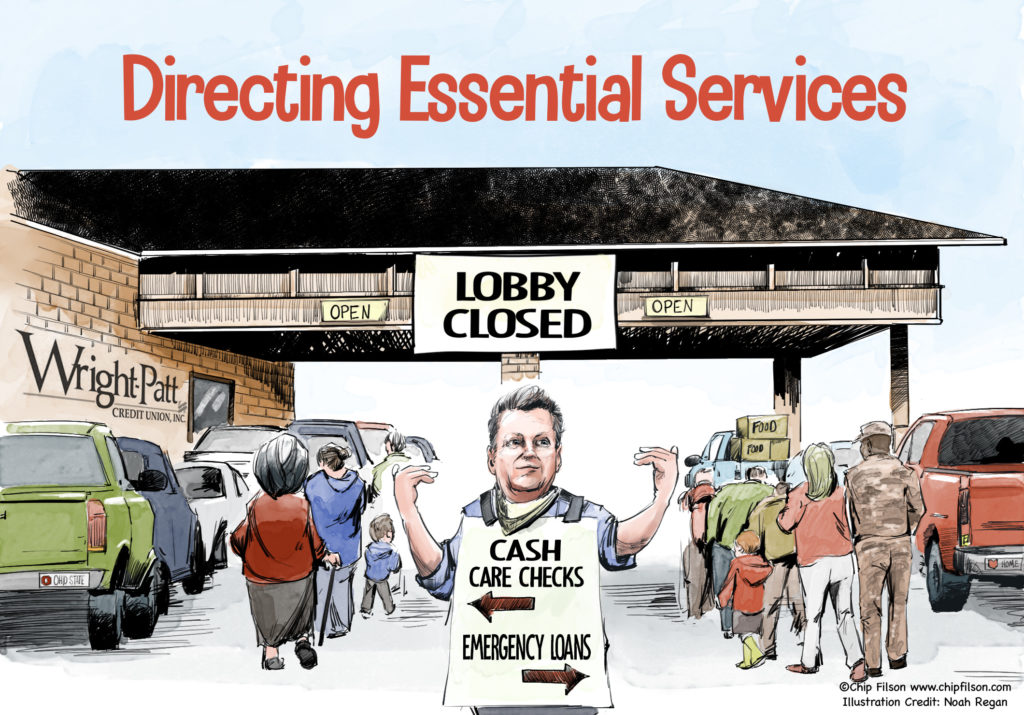As of December 2019, approximately 1,468 credit unions with total assets of $1.4 trillion reported membership in the Federal Home Loan Bank (FHLB) system. These totals represent 27% of credit unions by number, and 88% of total assets.
By comparison, there were 278 credit unions that were Central Liquidity Facility (CLF) members holding $115 billion or about 7.2% of assets.
While numbers for Federal Reserve membership are not readily available, since NCUA requires by rule that all credit unions over $250 million be members of either the CLF or Federal Reserve, one can presume the overwhelming majority have opted for Fed membership.
Why this choice? If the Fed and CLF are both “lenders of last resort” why is the CLF deemed so unappealing? How is the FHLB system so much more relevant for credit unions then their own liquidity backstop?
NCUA’s Appeal for Credit Unions to Join the CLF
In its April 2020 meeting, the NCUA board approved final rules to make the CLF more attractive to join. Some changes were the result of the CARES legislation. They included opening membership to Corporates directly while changing their agent roles, expanding lending purpose, and increasing the borrowing multiple based on contributed capital from 12 to 16 times.
Rule changes eliminated the six-month waiting period after joining to borrow, the ability to withdraw membership upon demand versus the current 6-24 months delay, easing collateral requirements, and allowing corporates to borrow for their balance sheet. Staff also outlined improved loan processing capabilities.
The three Board members made individual appeals urging credit unions to join up now. They explained that the CLF, as now capitalized, could be inadequate to the crisis even at a multiple of 32 times member shares. NCUA could need liquidity for the NCUSIF and the Federal Financing Bank is the most reliable source for funding in a crisis.
The One Missing Element
The CLF is a “mixed-ownership government corporation” managed by the NCUA. The credit unions supply all the capital upon which total borrowing capacity is determined. Funding is direct from the government’s financing bank, unlike the FHLB system which raises its borrowings in the open market.
If the CLF is to be relevant in the future, the “mix” of the credit union and NCUA roles needs to be reassessed.
The historic agreement in 1983 for the corporate system to fully fund the CLF’s capital requirements for all credit unions was ended by NCUA in 2012. The NCUA failed to provide a design for the CLF to become an integral partner with its credit union members-owners.
In contrast today the FHLB system is credit union’s preferred lender because they are member-centric in their operations. Members buy capital stock to borrow in good times and bad; they elect the board, and individual banks proactively develop products and services to serve their various members’ needs.
The CLF has been used solely as a regulatory tool by NCUA. In the Great Recession, the primary borrower was the NCUSIF which forwarded $10 billion to the balance sheets of WesCorp and US Central. An effort designed by leading credit unions to create a “protracted adjustment credit” program for credit unions to refinance members’ mortgage loans became stillborn when NCUA staff took over the initiative.
Non Routine Borrowings to Resolve Problems
Credit unions seeking liquidity assistance will almost always be under some form of financial stress. This can be due to market dislocations making assets difficult to value, unplanned share outflows, or earnings pressures from increased delinquency or sound loan growth options.
By “normal” operating criteria, credit unions needing liquidity will be under financial strain and often under examiner constraints. Recent NCUA practice is not to provide workouts with problem credit unions via NCUSIF 208 and CLF assistance. Rather NCUA prefers to direct the credit union to downsize to fit its reduced capital ratio. For contrast, this was not the policy when the CLF was used to alleviate the stress from the non-earning receivers’ certificates issued by the FDIC after the Penn Square failure in 1982.
NCUA has not sought credit union input for changes to better fulfill CLF’s legislative purpose to ”encourage savings, support consumer and mortgage lending, and provide basic financial resources to all segments of the economy.”
If credit unions are to be asked to fund the CLF more fully, they must be included in the conversation about the CLF’s future.
Reversing an Historic Catastrophe
At year-end 2011 and until October 25, 2012, the CLF was fully funded and covered all credit unions for membership. At the 2011 annual CLF audit, it had an estimated draw of $49.8 billion from the Federal Financing Bank. Total credit union assets at that time were $974 billion.
NCUA described events following the audit in 2012 in the annual report: “Neither USC bridge nor NCUA were able to secure the transition of USC’s products and services to a successor entity, thereby leading the Board’s decision to wind-down and liquidate USC Bridge’s operations as of October 29, 2012.
Accordingly, USC Bridge discontinued its role as the agent group representative for CLF and CLF redeemed USC Bridge’s capital stock on October 25, 2012. The result of the liquidation of the agent group representative is that as of December 31, 2012, CLF membership comprised solely regular members and no agent membership is in place.”
NCUA controlled both the USC Bridge and the CLF. NCUA unilaterally shut down the CLF’s thirty-year record of covering every credit union in the cooperative system.
US Central was never insolvent when liquidated by NCUA. US Central’s asset management estate (AME) today reports a positive balance of over $1.7 billion.
The Challenge at This Time
Two of the three current board members were involved in these prior events. Rodney Hood was on the NCUA board that conserved US Central in April 2009, even though solvent and fully reserved for losses. From February 2011 Todd Harper was NCUA’s Director of Public Affairs and senior policy advisor to Chairman Matz when the CLF’s comprehensive industry role was terminated in October 2012.
If the Board can learn from these previous events to again develop a partnership with credit unions about the role of the CLF, they will rectify one of the most unfortunate actions ever taken by NCUA.
Credit unions’ strength is their ability to collaborate, work for shared purpose and exercise patience when resolving problems. If the Board reaches out and listens, real change can be made in the next covid congressional package that will be coming down the congressional pike.
Such a re-design could make the CLF central to the future of the cooperative system and enhance the role laid out for it by Congress. That would be a tremendous opportunity in the current crisis to reverse a mistake from the prior one. Is the Board up to the challenge this time?



